A Complete Guide to Safe Scissor Lift Operation
Scissor lifts are commonly used in various industries to lift heavy loads and help workers reach high places safely. They offer a safer and more efficient alternative to ladders. However, knowing how to use them properly is critical to avoiding accidents. This article will guide you through the essential steps for using a scissor lift, including safety tips, operating instructions, and maintenance advice.
Understanding Scissor Lifts
-
Definition and Components
A scissor lift is a piece of equipment used to lift heavy loads to different heights. It’s commonly used in construction, warehousing, and manufacturing to move materials safely and efficiently. The main parts include the platform, where the load is placed; the scissor mechanism, which consists of crisscrossing arms that allow the platform to raise and lower; and the control system, which lets the operator easily adjust the height.
-
Types of Scissor Lifts
There are three main types of scissor lifts: electric, hydraulic, and manual. Electric lifts run on batteries and are ideal for indoor use because they are quiet and clean. Hydraulic lifts use fluid to operate and are powerful enough for outdoor and heavy-duty tasks. Manual lifts require physical movement effort and are best for lighter loads in smaller spaces. Each type is designed for specific uses, making them versatile for different jobs.
Dangers of Improper Use of Scissor Lifts
While scissor lifts offer safety and stability, improper use, operation, or maintenance can lead to severe accidents for both personnel and cargo. Here are the most common causes of scissor lift-related accidents:
-
Unstable Surfaces: Placing the scissor lift on an uneven or unstable surface can lead to tipping.
-
Improper Load Placement: If the goods on the lift are not placed correctly, the weight can be unstable, increasing the risk of tipping.
-
Overloading: Exceeding the lift's recommended weight capacity can compromise its stability.
-
Dangerous Environments: Operating the lift in areas with strong winds or near moving vehicles and power lines can pose significant dangers.
-
Lack of Training: Training for operators can result in following correct operational procedures and safety protocols.
-
Neglecting Maintenance: Failing to perform regular maintenance checks and servicing can lead to equipment failure and accidents.
Safety Precautions
-
Pre-Operation Safety Checks
Before using a scissor lift, always inspect it for damage. Check the platform and scissor mechanism for cracks, rust, or wear. Test the controls to make sure the lift raises and lowers smoothly. Ensure the lift is on a stable, level surface, and confirm that the load doesn’t exceed the weight limit. Remove any obstacles from the work area.
-
Operator Training
Only trained operators should use scissor lifts. They must know how to correctly operate the controls, load materials, and handle emergencies such as power failure or equipment malfunction. In such cases, they should follow the emergency procedures outlined in the training. Proper training ensures safe operation and reduces the risk of accidents.
-
Personal Protective Equipment (PPE)
Operators must wear proper PPE, including hard hats, safety glasses, gloves, and steel-toed boots. This gear protects against falling objects and other hazards. Additional PPE, like safety harnesses, may sometimes be required.
Operating a Scissor Lifts
-
Setting Up the Scissor Lifts
Always place the scissor lift on a stable, flat surface to avoid accidents. Clear the area of any obstacles or debris, and make sure the lift is level before use. Many lifts have built-in levelling indicators to help with this. A stable setup prevents uneven load distribution and reduces the risk of tipping.
-
Proper Load Placement
When loading the lift, place items in the centre of the platform to keep the balance. Always follow the weight limit—overloading the lift can cause it to become unstable. Be sure to secure the load so it doesn’t shift during operation, which could cause accidents or damage.
-
Operating Controls
The basic controls on a scissor lift include buttons to raise and lower the platform. Operators should know how to use these controls and be familiar with the emergency stop button. When moving the lift, use slow and steady motions to keep the lift stable and prevent the load from shifting.
-
Navigating the Workspace
Always stay aware of your surroundings while moving the lift, avoiding obstacles like power lines and other equipment. Use a spotter to help guide the lift and ensure safe movement in busy areas or tight spaces. This extra support helps avoid accidents and keeps the workspace safe.
Maintenance and Troubleshooting
1. Routine Maintenance
Remember to perform regular maintenance on scissor lifts to keep them safe and working correctly. Primary tasks include:
-
Cleaning the lift to remove debris.
-
Lubricating moving parts.
-
Checking the battery (for electric models).
-
Always follow the manufacturer’s maintenance schedule to ensure smooth operation and prevent breakdowns.
2. Troubleshooting Common Issues
If the lift is not raising or lowering, or you hear strange noises, there may be issues with the motor, hydraulics, or control system. Check for noticeable signs of damage or blockages. If the problems continue, contact a professional for repairs to prevent further damage or accidents.
Conclusion
Scissor lifts are essential for safely lifting heavy loads and reaching high places in many industries. To use them safely and effectively, it's important to understand the equipment, train operators properly, and keep up with maintenance. By following basic safety checks, using the right protective gear, loading items correctly, and performing regular upkeep, you can prevent accidents and ensure smooth operation. With these steps, scissor lifts can improve efficiency and safety in the workplace.
Looking to upgrade your Scissor Lift?
Get your free quote today! Connect with suppliers who will provide a detailed quote based on your needs. Request your scissor lift quote now!
FAQ:
-
What safety checks should I do before using a scissor lift?
Check for damage, ensure it's on a stable surface, confirm it’s within the weight limit, and clear the area of obstacles.
-
How can I prevent accidents with a scissor lift?
Train operators, load items correctly, avoid overloading, and stay aware of your surroundings. Always wear proper safety gear.
-
What should I do if the scissor lift has a problem?
Stop using it and check for visible issues. If it’s still not working, contact a professional for repairs.

.jpeg)
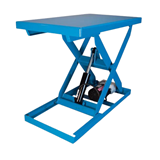
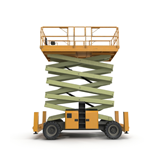
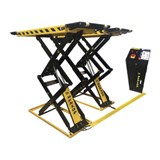

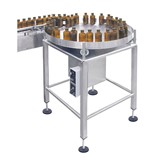
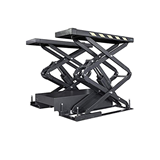
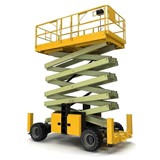
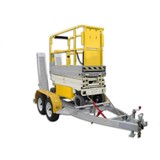
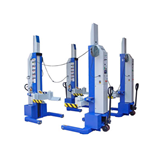
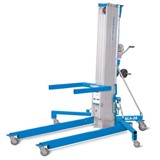

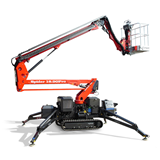
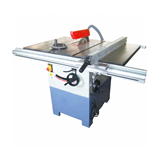
-205x205.jpeg)
